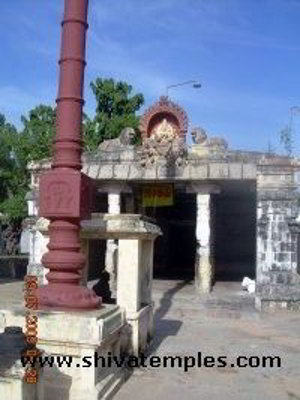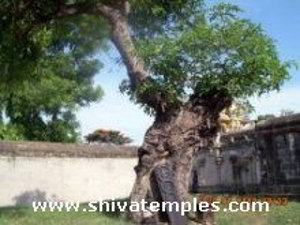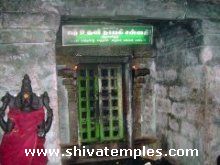Vaamanapureeswarar Temple, Tirumaanikuzhi
Location: Tirumaanikuzhi
Deity known as: Vaamanapureeswarar, Udavi Nayagar, Manickavaradhar
Female Deity: Ambujakshi, Pangayakkanni, Udhavi Nayaki
Pathikam: Sambandar - 1
Gallery - Vaamanapureeswarar Temple
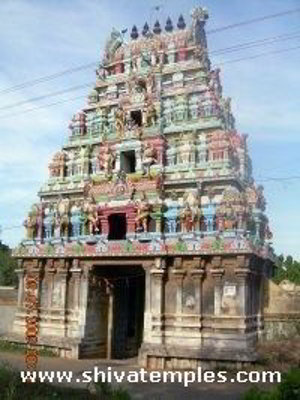
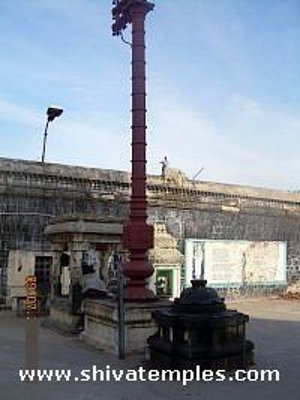
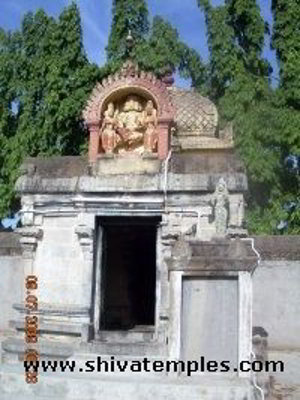
How to Reach
Situated on the route from Cuddalore to Panruti via Tiruvahindipuram (a Divya Desam), this Shiva temple lies about 10 kilometers from Cuddalore Town. Buses operating between Cuddalore and Kumanankulam pass through Tirumaanikuzhi, with a stop conveniently located right in front of the temple.
Nearby Temples
| 1 | Devanathaswamy Temple, Tiruvahindipuram - Divya Desam - 4 kms | |
| 2 | Tiruvathigai - 16 kms | |
| 3 | Tiru-Pathiri-Puliyur - 9 kms |
Temple Address
Tirumaanikuzhi
Via Tiruvakeenthipuram
Cuddalore Taluk
Cuddalore District
PIN 607401
Temple hours
Morning: 7:00 - 11:30
Evening: 4:00 - 8:00
Main Deity Darshan Timings
Morning: 9:00 - 11:30
Evening: 5:00 - 8:00
Temple Layout
Location and Main Structure
The temple is situated in a serene village on the southern bank of the river Ketila, at the foothills of the mountain range known as Copper Quarry. The temple’s eastern entrance is adorned with a magnificent five-tiered Rajagopuram. In the outer prakaram, across the gateway, stand the copper-plated Dwajasthambam, Balipeetam, and Nandi, enhancing the sanctified atmosphere of the temple complex.
Outer Prakaram
In the south-west corner of the outer prakaram lies the sannidhi of Vinayaka, while directly opposite, in the north-west corner, stands the sannidhi of Subramanya. Proceeding into the inner prakaram through the entrance from the outer enclosure, one can find several shrines dedicated to various deities — Vinayaka, the 63 Nayanmars, the Sapthamathas, Yugalingam, and Gajalakshmi — each adding to the temple’s sacred ambience.
Main Sanctum
The presiding deity of this temple, Lord Vaamanapureeswarar, is enshrined here in the form of a Swayambhoo Lingam — a self-manifested form.
Sacred Trees and Theertham
The Sthala Vruksham (sacred tree) of this temple is the Kondrai, while the Theertham associated with it is the Shwetha Theertham and the River Ketila.
Temple Significance
The Sacred Curtain - A Unique Feature
This temple is distinguished by a unique feature — a curtain that conceals the view of the presiding deity. This curtain is symbolically placed to preserve the sacred, undivided union of Lord Shiva and Goddess Parvati, worshipped here as Shiva Shakti. The Palli-arai Pooja holds special significance in Shiva temples, as it represents the divine rest of the deities at night. However, in this temple, the sanctum itself is regarded as the ‘Palli-arai’, the resting chamber of the divine couple. Hence, the Arthajama Palli-arai Pooja is not performed here.
Deeparadhana - A Rare Glimpse
The curtain is drawn aside only during the ‘Deeparadhana’ ritual, allowing devotees a rare and sacred glimpse of the small Shivalingam, gracefully mounted on a proportionate Avudaiyar. The curtain itself bears a beautifully embroidered image of Bhimarudra, adding to the temple’s divine aura and uniqueness.
Bhimarudra - The Divine Guardian
It is believed that Bhimarudra serves as the divine guardian, ensuring that no obstacles hinder Mahavishnu, who worships Shiva here in the form of a Maani (celibate Brahmachari). As a mark of reverence, rituals are first offered to Bhimarudra, and only thereafter is the curtain drawn aside for the Deeparadhana of the presiding deity. This unique tradition highlights the temple’s profound spiritual symbolism and sanctity.
Temple Legend
Mahavishnu and Mahabali
The legend of this temple is centered around Mahavishnu and Mahabali Chakravarthy, the grandson of the ardent Vishnu devotee Prahlada. King Mahabali was renowned for his generosity and compassion, always eager to help those in need. However, the celestial beings grew envious of his growing fame and influence and sought Mahavishnu’s intervention to curb his power. Responding to their plea, Mahavishnu incarnated as “Vamana,” a Brahmachari (celibate dwarf), to subdue Mahabali’s pride through divine grace. When Vamana approached Mahabali during a grand yagna and requested three feet of land, the king readily consented. At that moment, Vamana transformed into the cosmic form of “Thiruvikrama”, measuring the entire earth with one step and the vast universe with the second. When there was no space left for the third step, Mahabali humbly offered his own head, surrendering himself completely. Moved by his unwavering devotion and humility, Mahavishnu blessed him with immortality, granting him a place among the seven eternal beings (Chiranjeevis) and sending him to reign over Pathalam, the netherworld.
The Origin of the Name 'Manikkuzhi'
It is believed that Mahavishnu, after completing his Vamana avatar, came to this sacred place in the form of a “Maani” (Brahmachari or Bachelor) to worship Shiva and seek absolution from the Brahmahathi Dosham incurred during the episode with Mahabali. As the divine Vamana was of small stature and unable to behold the full vision of Shiva’s face, Lord Shiva compassionately manifested Himself in a smaller form within a pit (“Kuzhi” in Tamil) so that Mahavishnu could offer his worship with ease. Thus, this sacred place came to be known as “Thiru Manikkuzhi” — where “Thiru” denotes holiness, “Maani” refers to the Brahmachari form of Vishnu, and “Kuzhi” signifies the pit where Shiva appeared.
Udhavinayakar - The Helper
In his Pathikam, Thirugnana Sambandar refers to this sacred place as “Udhavi Manikkuzhi.” This is further substantiated by ancient inscriptions that mention the name “Udhavi.” Over time, it appears that the name of the temple, Manikuli, gradually evolved to denote the entire town itself. A fascinating legend is also associated with this place. A merchant named Athri, who had traveled from the northern regions, was once attacked by robbers near this site. The merchant fervently prayed to Shiva, who promptly appeared and rescued him from danger. In remembrance of this divine intervention, god Shiva came to be worshipped here as “Udhavinayakar” and Goddess Parvati as “Udhavi Nayaki”, both signifying “the ones who offer help”, derived from the Tamil word “Udhavi” meaning help or assistance.
Arunagirinathar's Praise
The 14th-century saint-poet Arunagirinathar has composed a hymn in praise of Muruga of this temple. Here, Muruga is enshrined with twelve hands, facing east, accompanied by his divine consorts Valli and Deivanai. The Lord is seen mounted on a peacock, which is facing north, a posture considered highly auspicious.
Sambandar's Pathikam
The Pathikam composed by Thirugnana Sambandar in praise of this deity is featured in the Third Thirumurai.
More Gallery
